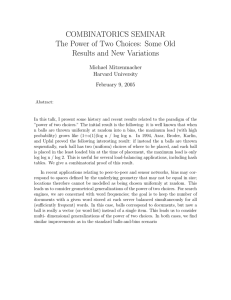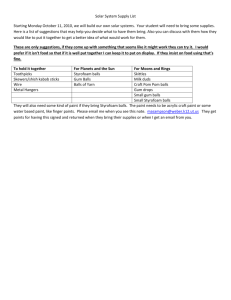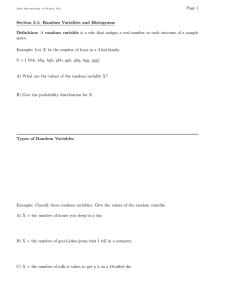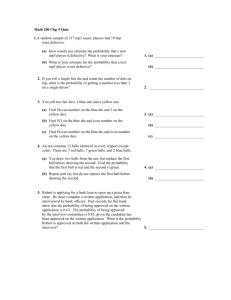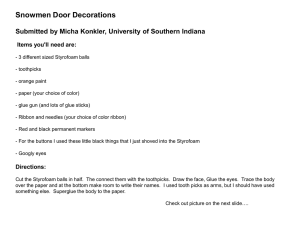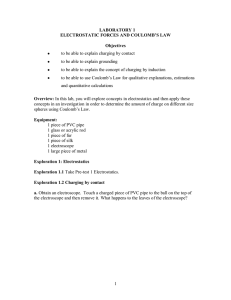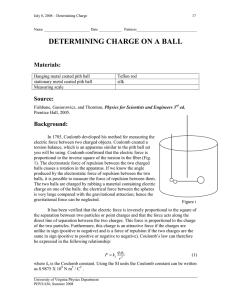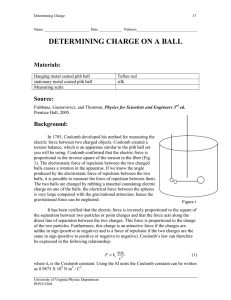Coulomb's Law - Electroscope Objective Physics Lab
advertisement
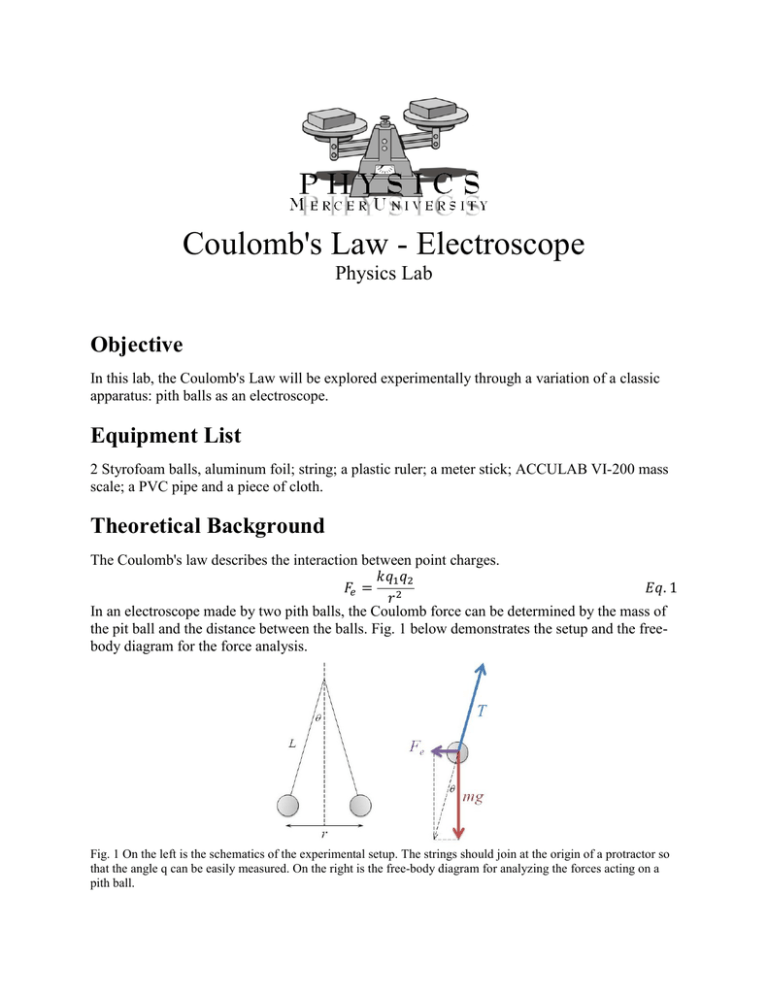
Coulomb's Law - Electroscope Physics Lab Objective In this lab, the Coulomb's Law will be explored experimentally through a variation of a classic apparatus: pith balls as an electroscope. Equipment List 2 Styrofoam balls, aluminum foil; string; a plastic ruler; a meter stick; ACCULAB VI-200 mass scale; a PVC pipe and a piece of cloth. Theoretical Background The Coulomb's law describes the interaction between point charges. 𝑘𝑞1 𝑞2 𝐹𝑒 = 𝐸𝑞. 1 𝑟2 In an electroscope made by two pith balls, the Coulomb force can be determined by the mass of the pit ball and the distance between the balls. Fig. 1 below demonstrates the setup and the freebody diagram for the force analysis. Fig. 1 On the left is the schematics of the experimental setup. The strings should join at the origin of a protractor so that the angle q can be easily measured. On the right is the free-body diagram for analyzing the forces acting on a pith ball. When the pith balls are charged with equal amount of charge, q, they repel each other to a distance r (measured from the centers of the balls), due to a Coulomb force 𝑘𝑞 2 𝐹𝑒 = 2 𝐸𝑞. 2 𝑟 This Coulomb force Fe is balanced by two other forces, the tension force T and the weight on the ball mg. From the free-body diagram, the relationship between Fe and mg can be determined by the angle θ or the ball-to-ball distance r without knowing T. 𝑟/2 𝐹𝑒 = tan 𝜃 = 𝐸𝑞. 3 𝑚𝑔 𝑟 2 2 �𝐿 − ( ) 2 This relationship allows us to estimate the amount of charge on the pith balls through measuring the angle θ or the ball-to-ball distance r. 𝑞 = 2𝐿 sin 𝜃 � Experimental Procedure 𝑚𝑔 tan 𝜃 𝑚𝑔𝑟 3 =� 𝑟 𝑘 2𝑘(𝐿2 − (2)2 )1/2 𝐸𝑞. 4 1. Cut a string of length ~ 1.5m. Connect the styrofoam balls to either ends of the string. 2. Wrap each styrofoam ball with aluminum foil. Before wrapping, adjust the amount of aluminum foil to make sure each "aluminum wrapped" styrofoam ball has the same mass. Use as little aluminum foil as possible. 3. Fold the string to half and attach it to the horizontal bar, so that both styrofoam balls are hung with the same length of string. 4. Rub the PVC pipe with a piece of cloth to charge the pipe. Slide the pipe on the bottom of one styrofoam ball. It is ok if the balls bounce into each other a few times before settling down. The contacts actually help distribute the charge more evening between the balls. 5. Measure and record the distance r between the centers of the balls with the plastic ruler. 6. Repeat 4 and 5 three times to obtain three different amounts of charge q. Observing Points 1. Does r change with time? If so, how fast? What does it mean? 2. If a Van De Graaff generator is available, try to charge the pith balls with different power setting on the generator. How does r change accordingly? Data Analysis 1. Compute the charge, q, on each ball from the measurement of r using Eq.4. 2. From the uncertainties in each measurement (i.e. m, L, and r), estimate the percent uncertainty in the calculated q values. (Seek your instructor's help if you have question about this.) Selected Questions 1. Based on the charge that you found in the lab, how many electrons are transferred between the PVC pipe and the styrofoam balls? 2. From Eq.4, one can also find the charge by measuring the spanned angle 2θ. Would it be a better or worse way to determine charge q? Why? 3. In the lab, you obtained three different amounts of charge on the ball. Does a larger spanned angle correspond to larger or smaller charge?


